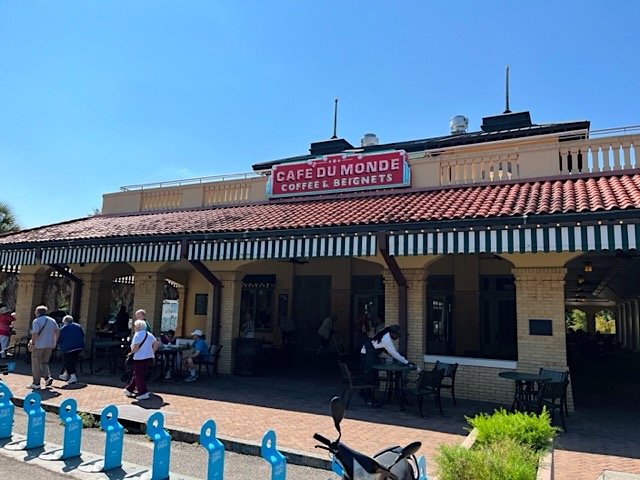
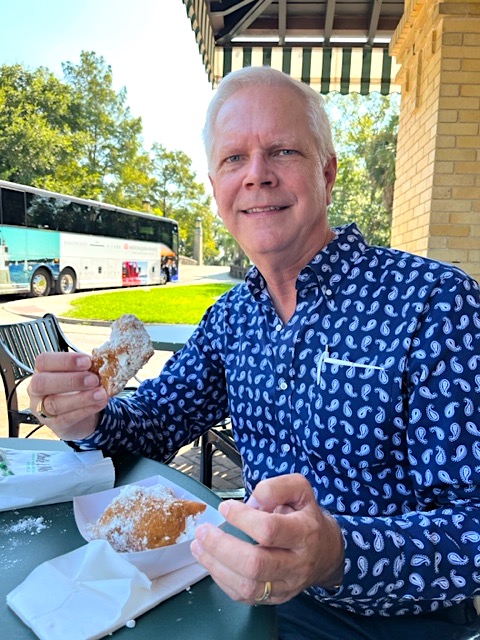


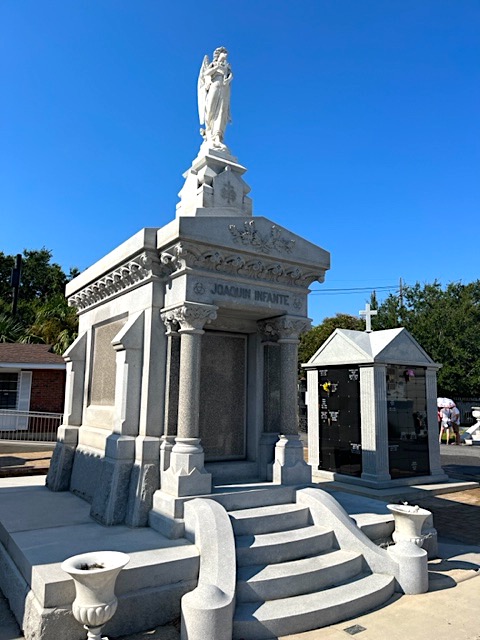
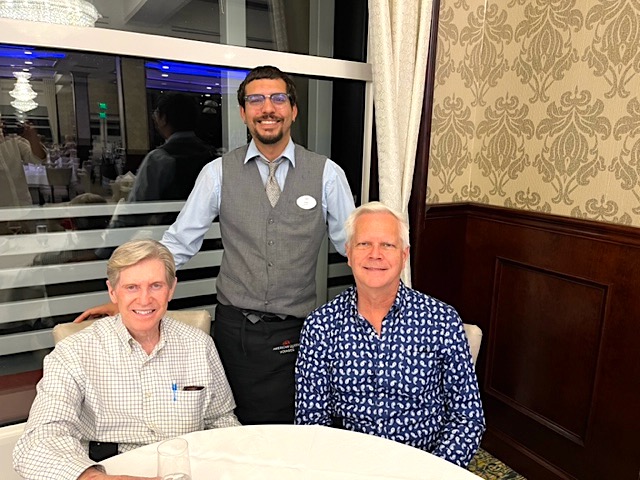
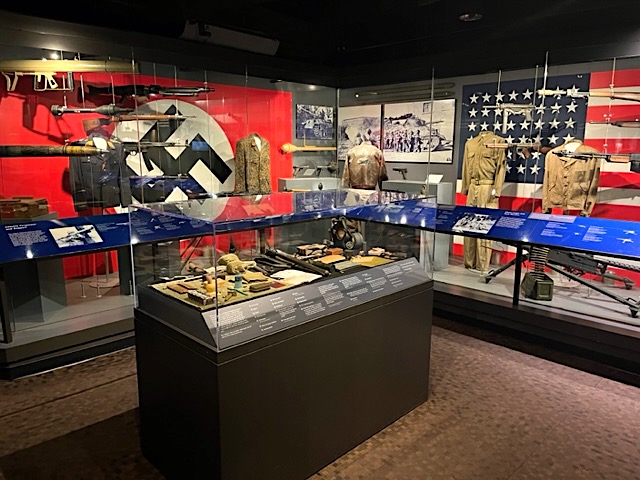
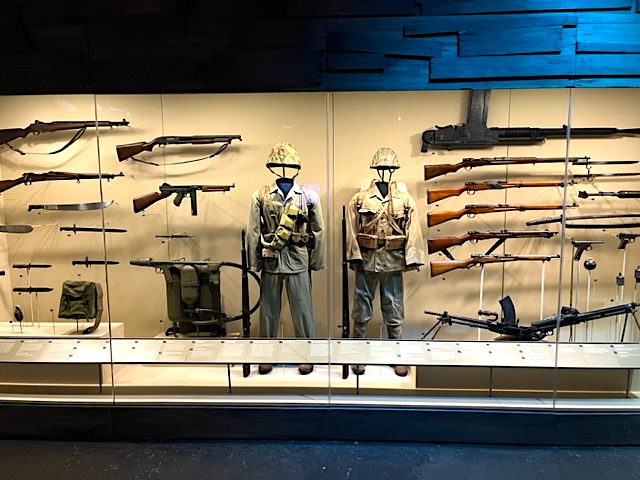
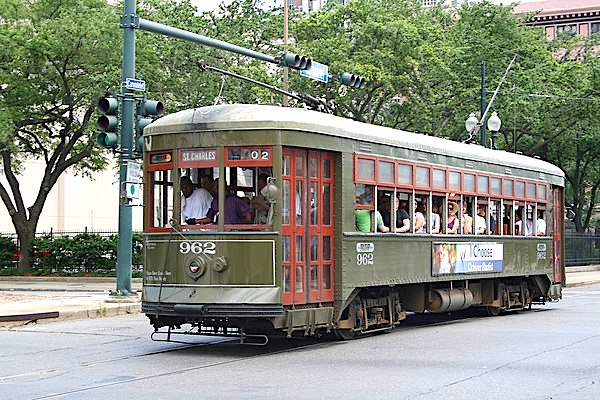
After breakfast onboard the American Countess river boat, we disembarked in New Orleans where we embarked on a four-hour city tour through a city radiating an eccentric and unique atmosphere. On our New Orleans driving tour we had an Irish woman for our guide. She had come to the U.S. in 1975 as a young woman and got married. She had been living in New Orleans ever sense. We saw the city through her eyes and she sprinkled our tour with first hand experiences and with a lot of humor. Our motor coach took us past some of the most iconic attractions in the city, including Jackson Square, the French Quarter, the Garden District, and the Lakefront Area.
During our morning tour we stopped at the beautiful New Orleans City Park which dates back to 1854. The park encompasses 1,300 acres and is one of the largest urban parks in the country. The park is also home to the largest collection of mature live oak trees in the world, some over 800 years old. After Hurricane Katrina in 2005, 95% of the park was sitting in floodwaters for weeks causing nearly $50 million in damages to the park. With government assistance and local donations, they have replanted all of the lost trees (some 2,000) and made extensive upgrades to the park. In the park we stopped at New Orleans’ famous Café Du Monde for their beignets. The beignets are squares of fried dough eaten hot with plenty of powdered sugar. They were delicious and messy as everyone left covered in white powdered sugar.
We stopped at one of the many local catholic cemeteries to explore some of the ornate family vaults. There are many Catholic cemeteries in New Orleans that had traditionally been owned and operated by individual parishes. In 2016 management of all of the cemeteries were combined under the Ministry of the New Orleans Catholic Cemeteries.
On our bus there were also travelers who were heading to the airport to fly home so we had to make a trip to the airport which took up about 90-minutes of our day. Very frustrating.
We finally arrived at our hotel for the next two nights, the Intercontinental Hotel near Bourbon Street in the French Quarter. After getting settled into our room we headed out to explore the city.
Our first stop was at The National WWII Museum, formerly known as the National D-Day Museum which is a military history museum. The museum focuses on the contribution made by the US to Allied victory in World War II. Founded in 2000, it was later designated by Congress as America’s official National World War II museum in 2004. The museum is affiliated with the Smithsonian Institution outreach program.
When the museum opened, its main gallery focused on the invasion of Normandy. The Higgins boats, vital to the amphibious operations, were designed, built and tested in New Orleans by the Higgins Industries. Other galleries, built since its opening, consist of an aircraft pavilion with airplanes suspended from the ceiling, a theater, a Road to Tokyo exhibit which focused on the Pacific war, the Road to Berlin focused on the European theater, an Arsenal of Democracy focused on the experience on the home Front and room for temporary exhibits which rotate.
The museum is beautifully done and incorporates many personal stories of families across the nation who experienced the war personally through military service. It has extensive film footage shown throughout the museum, photos, weapons, exhibits, personal history recordings and more. It is so large that it takes up two city blocks and is connected with a bridge over the road. You can easily spend hours exploring the museum.
After the museum closed we got on one of the historic streetcars for a ride up and down St. Charles Road. This is one of the most beautiful streets in the city with oak tree lined sidewalks and gorgeous homes. This road passes the extensive and beautiful Tulane University campus. The St. Charles streetcar line has been running since 1835 and is the oldest continuously operating streetcar line in the world. Most of the cars running today date back to the 1920’s.
In the evening we explored the French Quarter on foot but it was not really my cup of tea. The French Quarter is the oldest neighborhood in the city of New Orleans. Today you still see many influences from the Spanish period with the ornate cast iron galleries or balconies, many buildings having several tiers of balconies overlooking the narrow streets below. Bourbon Street is closed to car traffic at night so they can accommodate many people in the street and on the sidewalks. Most of the people have oversized drinks in one hand and a cigarette in the other. Every block seems to have multiple card tables set up with a table cloth and candle and a sign advertising tarot card readings or psychic readings.
We stopped for a bite to eat at a local restaurant called the Royal House where we tried the local specialty, the Po’boy Sandwich. Kent tried the fried fish sandwich while I tried the shrimp sandwich. They serve the fried fish on a toasted French roll with lettuce, tomato and pickles. On the side French fries to top off the large quantity of grease. Also available are alligator Po’boys in case you were wondering.
